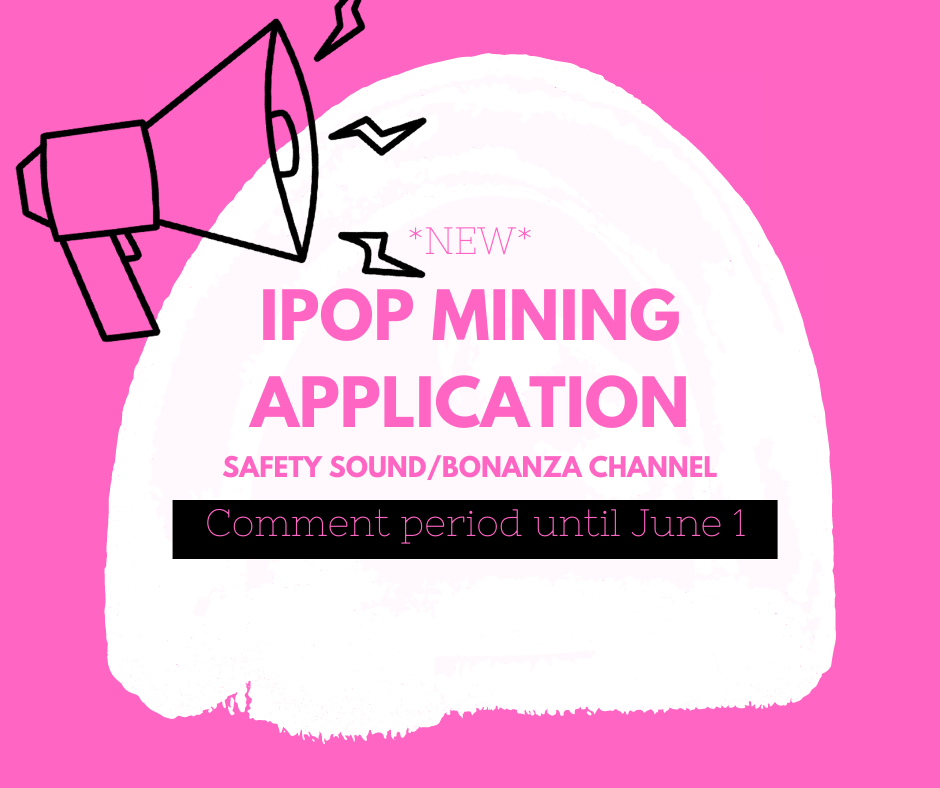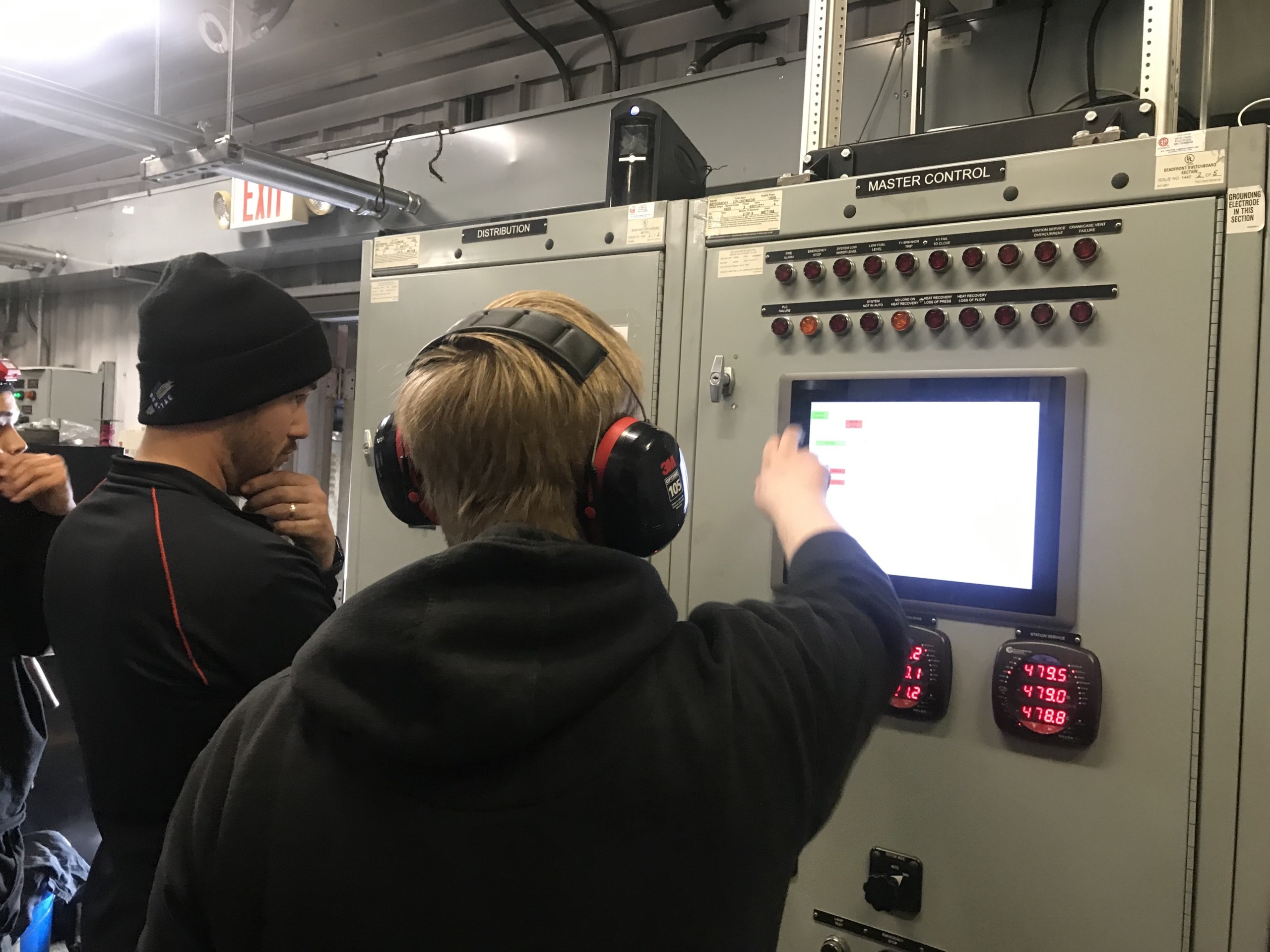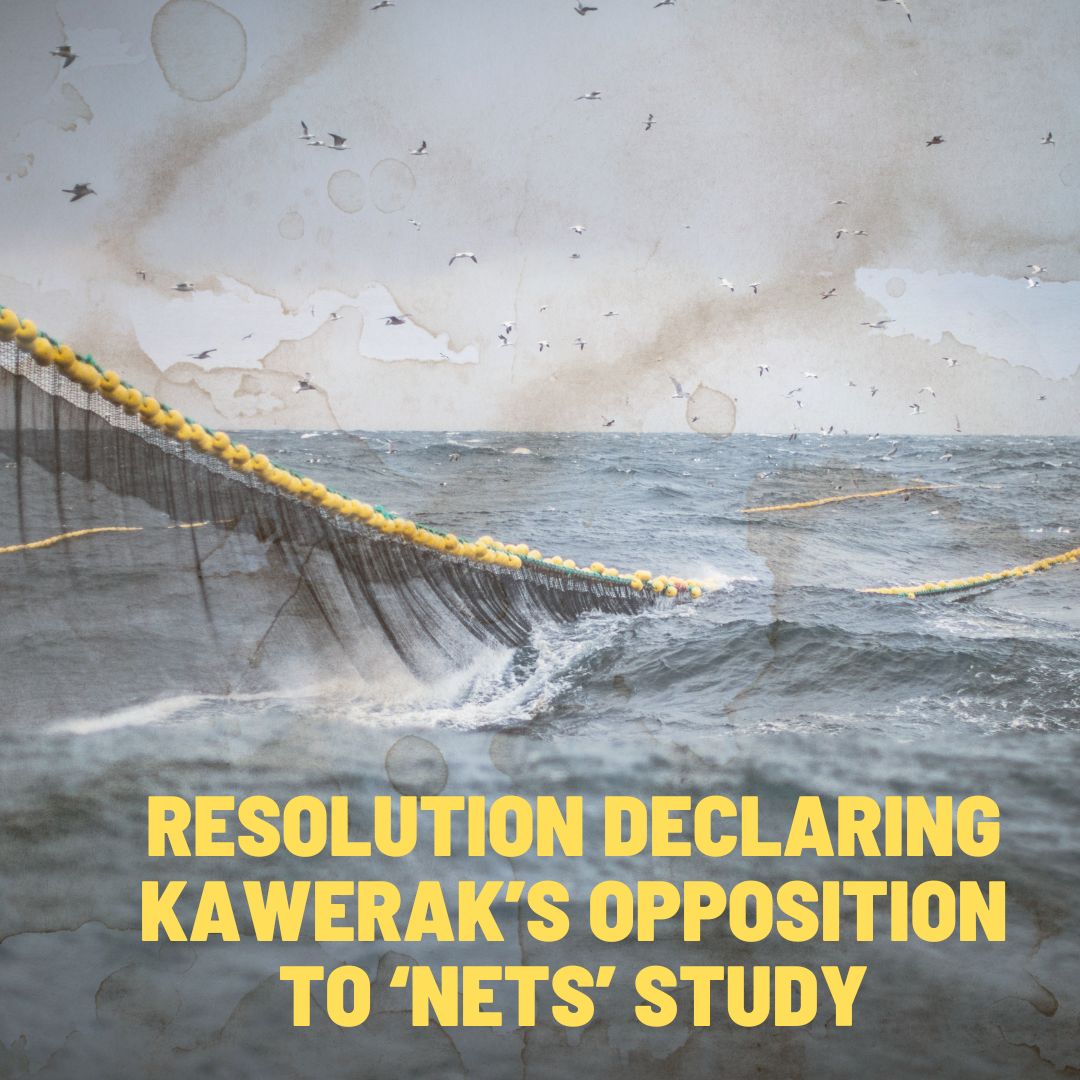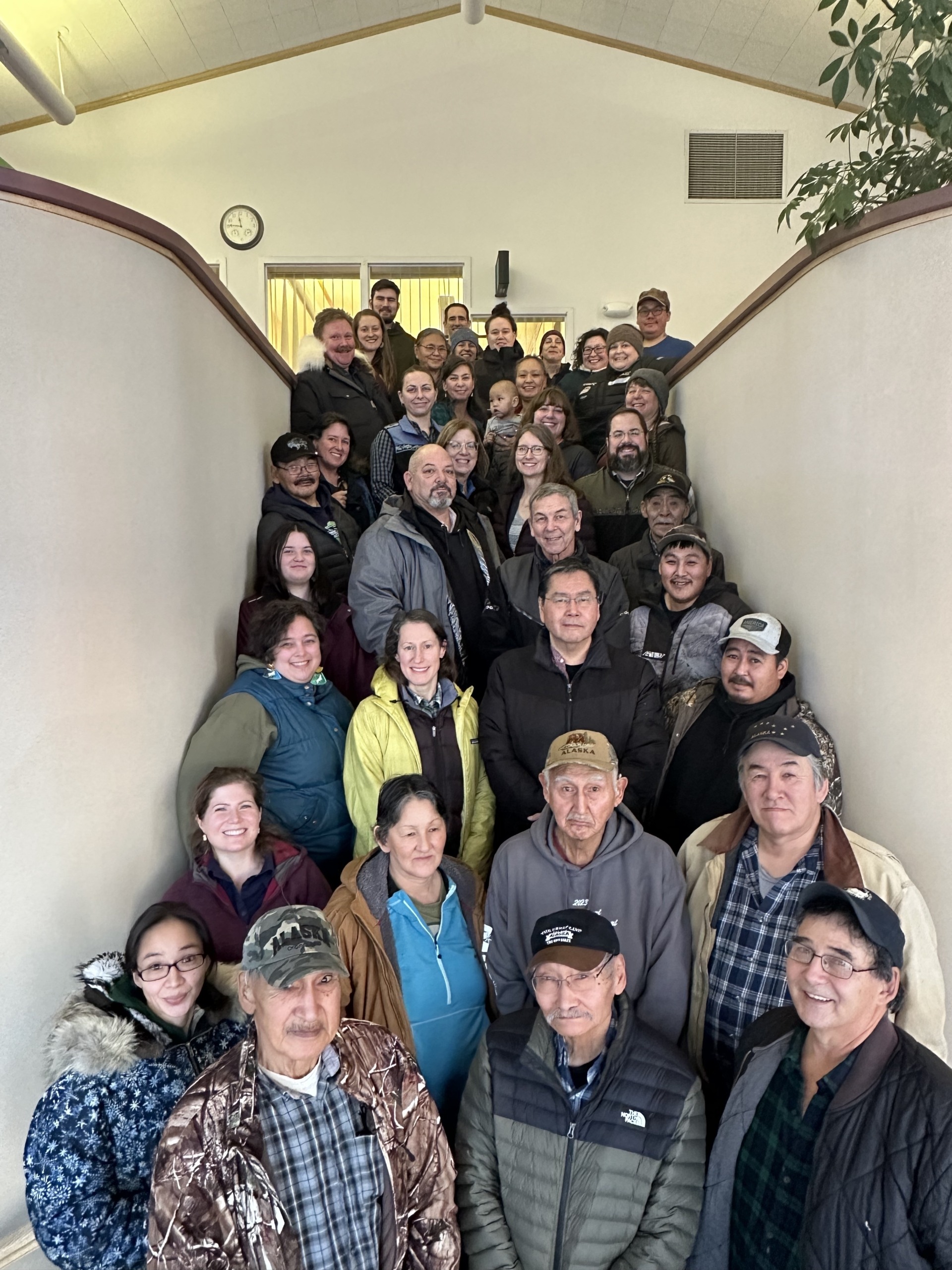Kawerak once again submitted comments opposing the permit to mine in the Safety Sound by IPOP. Comments regarding the proposal are due June 1. If you would like to submit a comment please contact Tiffany Kwakwa at (907) 474-2167, toll free from within Alaska at (800) 478-2712, or by email at: Tiffany.D.Kwakwa@usace.army.mil
Download Kawerak’s comment letter here or view below:
https://kawerak.org/download/ipop-comment-letter-5-2021/
5/19/21
U.S. Army Corps of Engineers
FAIRBANKS FIELD OFFICE
Regulatory Division (1145) CEPOA-RD
2175 University Avenue, Suite 201E Fairbanks, Alaska 99709-4927
ATTN:
PUBLIC NOTICE REFERENCE NUMBER; POA-2018-00123
Kawerak, Inc. is a regional Tribal consortium in the Bering Strait Region of Alaska, where there are 20 federally-recognized Tribe. Kawerak’s mission is to advance the capacity of our people and Tribes for the benefit of the region. Kawerak offers many programs to our constituents like the Land Management Services Program and the Subsistence Resources Program. We also support economic development that is sustainable and does not pose a threat to the region’s fragile ecosystem. We appreciate the opportunity to provide public comment on IPOP’s amended application to revise the project plan for mining and to conduct case studies in the area.
We oppose IPOP’s application to conduct case studies or for any future mining in the Bonanza Channel area due to the extremely sensitive and pristine ecosystem which, once altered, may never return to its natural state. There are approximately 10 Native Allotments and over 100 campsite owners who have campsites all along the Bonanza Channel area because of the close proximity to subsistence resources throughout the year. Residents (Native and non-Native) of Nome utilize this area for subsistence purposes.
Kawerak, Inc. respectfully requests Tribal consultation, and an extension to the public comment deadline. A town hall meeting to ensure the general public has been made aware of what is being proposed is vital to ensure sufficient time is provided to properly review IPOP’s application and to make public comments.
It is our opinion if IPOP, LLC is allowed to mine in the Bonanza Channel area they would be in clear violation of Alaska Statute 16.05.258 Subsistence Priority, and Alaska Statute 16.05.790 Hunter Harassment Law. AS 16.05.258 Subsistence Priority clearly states that Subsistence use is a top priority above all else including commercial, sport and personal use.
The entire Bonanza area is a subsistence use area throughout the year. People from Nome use this area year-round to gather eggs, hunt birds, fish for all species throughout the year, hunt for seals, and also for moose and bear hunting in the spring and fall as well as for berry picking and gathering greens in the summer.
It is against State law (AS 16.05.790) to intentionally obstruct or hinder another person’s lawful hunting, fishing, trapping or viewing of fish and game. Illegal activities include positioning one’s self in a location where human presence may alter the behavior of fish or game another person is pursuing. It is also illegal to create a sight, sound, smell, or physical stimulus to alter the behavior of fish and game another person is attempting to take. If IPOP’s application to mine isapproved, it will be in violation of both AS 16.05.258 & AS 16.05.790 just by having their presence in the area. This will alter all fish & wildlife behavior in the vicinity and beyond that subsistence users are trying to harvest all throughout the spring, summer, fall and winter months. Many bird watchers, from all over the world, come to this area to see specific bird species that can only be seen there. It is well documented by both State & Federal agencies that in order for fish and wildlife to thrive they need to be undisturbed.
IPOP’s application suggests their proposed mining operation will be able to co-exist with subsistence resources and subsistence activities. In front of Nome it has been reported for several years by local subsistence users how migratory birds of all kinds do not frequent the area at all or not as often as they use to. This is due to all the increased offshore mining activity that is taking place in front of Nome. The entire Safety Sound Bonanza Channel area is a huge wetland for thousands of migratory birds that utilize the area as a resting/staging area in the spring and fall as well as birds that nest in the area. Seals will no longer frequent the area due to all the commotion and noise.
The Southern Seward Peninsula faced a chum salmon crash that lasted nearly 30 years. It is our understanding the majority of salmon that enter into Bonanza Channel Safety Sound enter it through the eastern most outlet just past Bonanza Bridge. Will salmon even migrate past the small area in which the mining operation is being proposed if IPOP is allowed to operate? The Bonanza Channel Safety Sound area is listed in the Anadromous Body of Water Catalog and chum salmon are noted by ADF&G to have spawning grounds in close proximity to the proposed mining operation. Arctic grayling were once very abundant in the area, but now some river systems have strict harvest regulations and where grayling over a certain size must be released if caught.
Subsistence users should not bear the burden of conservation just so a mining outfit can take a gamble to test out their equipment in hopes of finding gold. It is IPOP’s opinion they will not alter water current and circulation patterns; this is purely speculative. The applicant goes so far as to suggest their operation will provide a safe haven for nesting birds. Nesting birds already take refuge from predators on the barrier islands and they have established nesting colonies
that have been there for thousands of years. Migratory birds will not nest in the area while there is mining commotion going on. The applicant states they will avoid sites having unique habitat including habitat of threatened or endangered species and that no threatened or endangered species habitat has been documented in the footprint of the project. This is false, Ringed Seals are in fact on the Endangered Species list as Threatened and through Kawerak’s Social Science Program; Seal and Walrus mapping project Ringed Seals have been positively identified in the proposed area during the spring, summer and fall. It is essential to Ringed Seal pups and sub-adults to hone their fishing skills on small forage fish and to weather out adverse weather conditions or large storms on the open ocean. This same information has been relayed by Kawerak to NOAA in a comment letter regarding Ringed Seal Proposed Critical Habitat; this same information has also been relayed to NOAA at the Ice Seal Committee level where there is a Co-management agreement to help protect ice seals. Stellers & Spectacled Eiders are also on the ESA list as Threatened and known to frequent the area; how are they supposed to establish a nest site if there is mining commotion going on? Another migratory bird species that has been documented by the USF&WS that is in decline is the Arctic Tern. Arctic Terns are found all throughout the Bonanza Channel area not only to nest but because of the specific foraging area and safety from adverse weather conditions that Bonanza Channel Safety Sound provide.
The applicant states if they are allowed to operate they will create more nesting opportunities for migratory waterfowl in the mud. Waterfowl do not nest in open mud flats where there is no cover or vegetation to help conceal them. This would not only make them more vulnerable to predators and would also make them more vulnerable to high tides or to flooding which can occur all throughout the spring, summer and fall. IPOP states in their amended application that they will avoid swan foraging habitat, how can this be when the entire Safety Sound Bonanza Channel area is prime habitat for swan foraging? Swans have been reported by local Traditional Knowledge holders to occupy the area in which IPOP is proposing to mine. In Alaska, Tundra Swans were once heavily depleted by outside users so much so they were closed to harvest and anyone that inadvertently harvested a swan had a hefty fine and possible confiscation of gear. Subsistence users should not have to bear the burden of conservation just so a mining outfit can take a gamble on a resource that may not even be there.
The applicant states they will enhance or maintain value of ecosystem services. How will this be accomplished when they will be destroying the sensitive ecosystem that took nature to create over thousands of years? As part of the applicant’s mitigation plan it appears they suggest to install culverts in order to help maintain salmon passage. If a culvert is installed in the Bonanza Channel this will in fact impede salmon passage by forcing migrating salmon into a bottle neck. It will also block off subsistence users who use boats to access certain areas. Many subsistence users boat to the El Dorado or Flambeau Rivers where there are Native Allotments. The area being proposed for the case study and mining does not need culverts installed; it already has natural flow where fish and wildlife are allowed to move/migrate freely in or out of the Bonanza Channel. The applicant states they will have no discharge in order to avoid the season or periods when recreational activity associated with the aquatic site is more important – not
applicable to project. How is the mining activity going to avoid recreational activity and state that such activity is not applicable to their project when subsistence activities are going on all throughout the spring, summer, fall and winter? If allowed to mine, every part of IPOP’s mining activity will completely disrupt subsistence resources, subsistence activities and people’s way of life, people who have lived here since time immemorial.
In the application IPOP states they will avoid any actual eel grass beds. Are they basing this off of an existing study, and if so who has this information? IPOP has made several of false statements in past applications or in public meetings by stating there is no eel grass in the area, no salmon, no migratory birds, no seals, no subsistence activities. If this was the case, fish and wildlife agencies wound not have seasonal bag limits, open and closure dates, permits, licenses, subsistence harvest reports, population estimates, documentation on migration routes, what species are where and during what time of the year.
Lastly, we question who will be conducting the real time monitoring as stated by the applicant or if there will be qualified observers on board to ensure things are being reported properly? If approved, the applicant will be mining approximately 28.5 miles east of Nome with no consistent oversight from the agencies in charge of mining and any reporting if done would be by an outfit that has already shown they are not willing to be honest and truthful as shown by past public meetings and even in their own past mining applications. In IPOP’s amended application they even go so far as to state they will make the area suitable for fish and birds. The entire area is already suitable for all types of fish and wildlife as well as Native Allotment owners, campsite owners, subsistence users, bird watchers and the general public who have chosen this area and it has been this way for thousands of years.
We kindly thank you for your time and consideration on this very important matter. If you have any questions, please contact Vice President of Natural Resources Brandon Ahmasuk at 907- 443-4265 or bahmasuk@kawerak.org
Sincerely,
Melanie Bahnke, President





